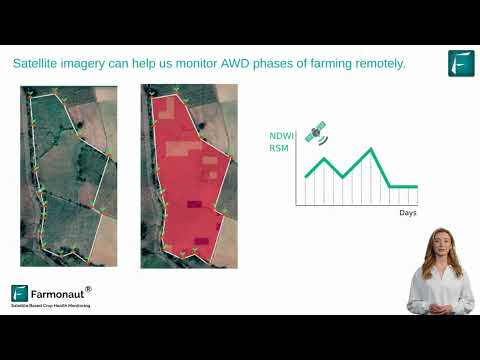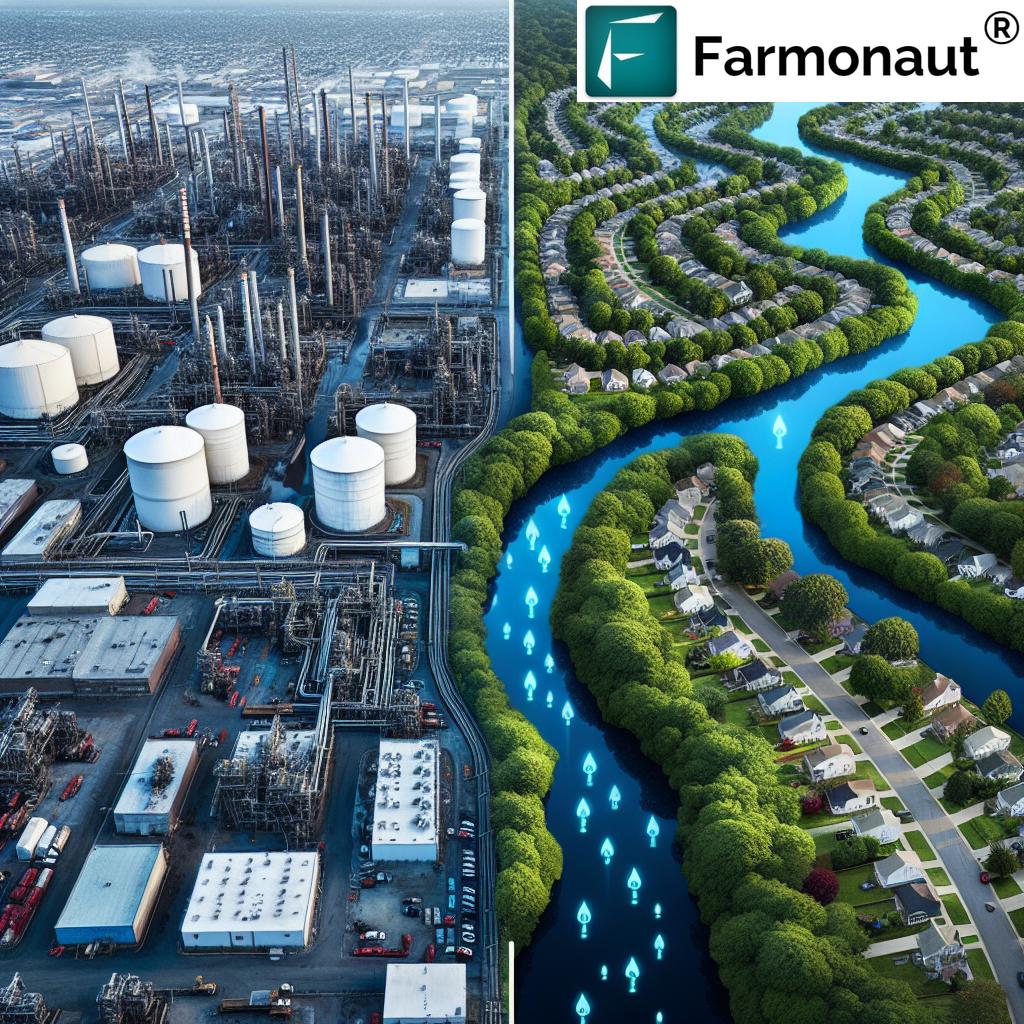Golf Course Water Management: 7 Hacks for US Success
“U.S. golf courses can save up to 50% water annually by upgrading to efficient irrigation systems.”
Introduction: Why Golf Course Water Management Matters
Golf courses are iconic recreational spaces within the United States, offering green retreats nestled amidst urban and rural landscapes. However, beneath this beauty lies a pressing reality: golf courses are significant consumers of water, especially in arid regions where resources are already stretched thin.
With golf course water management now at the heart of both sustainability and operational strategy, it has become imperative for us to adopt efficient irrigation systems, leverage alternative water sources for golf courses, and implement best management practices (BMPs) that not only maintain turf health but also minimize the environmental impact of golf courses.
Our goal with this comprehensive guide is to explore the top seven actionable hacks for water conservation on golf courses in the US, arming course managers, superintendents, and industry stakeholders with data-driven insights and practical solutions. Whether addressing the needs of drought-vulnerable regions like California or the abundant golf landscapes of Florida, sustainability is our shared imperative.
Water Usage on Golf Courses in the United States
To set the stage, let’s examine just how much water is being utilized by U.S. golf courses. According to data from 2020, the primary sources of irrigation water were:
- Wells: 531,274 acre-feet
- Open lakes and ponds: 382,476 acre-feet
- Recycled water: Usage remains steady, reflecting a critical move toward more sustainable golf course practices (Source).
These numbers illustrate the high resource consumption and reinforce how vital it is to optimize golf course water management for conservation and sustainability. Notably, where recycled water for irrigation has been adopted, such as in the Southwest and Southeast regions, its use now represents up to 34% and 28% of applied water respectively, outpacing the national average of 21%.
Did you know? The average golf course in the United States utilizes nearly one million gallons of water each day during peak season. This statistic highlights the potential for amazing water savings through efficient management.
Efficient Golf Course Irrigation Systems: Key to Water Conservation
Efficient golf course irrigation systems are the linchpin in the quest for reducing water usage and maintaining turf health under varying environmental conditions. Modern irrigation technology now empowers us to precisely apply water where and when it’s most needed—dramatically improving return on investment and sustainability.
Modern Systems and Technologies
- Smart Controllers: Automatically adjust irrigation schedules based on weather forecasts and soil moisture levels, reducing water waste and operating costs.
- Drip and Micro-Irrigation: Deliver water directly to the base of plants, promoting deeper root growth and reducing evaporation.
- Reverse-Osmosis (RO) Desalinization Plants: These systems produce irrigation water from ocean or brackish sources, especially in areas like Florida where freshwater supplies are limited (USGA).
- Soil Sensors: Real-time data supports fine-tuned watering decisions, ensuring every drop counts while maintaining optimal turf health.
By implementing these systems, golf courses across the United States are not only achieving substantial water savings but also supporting high-quality greens even through challenging climatic variations.
Alternative Water Sources for Golf Courses: Reducing Reliance, Boosting Sustainability
With the growing recognition of water scarcity—especially in arid and drought-prone regions—the industry’s pivot to alternative water sources marks a turning point in sustainable golf course practices.
Key Alternative Water Sources Include:
- Recycled Water for Irrigation: Sourced from municipal wastewater treatment, recycled water reduces reliance on potable supplies and often contains nutrients beneficial for turf growth.
- Rainwater Harvesting on Golf Courses: Collection, storage, and reuse of rainwater can significantly offset overall water usage, especially effective during rainy seasons or storm events.
- Desalinized Ocean or Brackish Water: Particularly relevant in coastal zones or places with saline aquifers, desalinization technologies like RO plants make new sources available while safeguarding freshwater reserves.
For instance, in parts of Florida, implementation of RO desalinization systems is quickly becoming a best practice, reducing both costs and environmental impacts while ensuring consistent irrigation supply.
The shift toward these alternative sources is not merely an environmental choice, it’s a practical necessity for golf courses aiming to remain viable and sustainable into the future.
Best Management Practices for Golf Courses: BMPs for Better Water Use
Implementing Best Management Practices (BMPs) is fundamental for golf course water management. With an array of strategies—some simple, some sophisticated—we can drastically curtail water waste, promote healthy turf growth, and minimize environmental impact, without compromising course quality.
Key BMPs Used on US Golf Courses:
- Drainage Systems: Proper design and ongoing maintenance of drainage plots prevent waterlogging, promote optimal root development, and control runoff by guiding discharge through pretreatment zones such as grass swales or retention basins. These features play a direct role in removing nutrients and sediments.
- Wetland Protection and Incorporation: By incorporating wetlands into golf course design and maintaining buffer strips, we use these natural areas as filters to remove pollutants, stabilize water edges, and foster wildlife habitats.
- Aeration and Topdressing: Regular aeration and topdressing improve soil structure, enhancing infiltration, reducing surface runoff, and improving water retention.
- Rainwater Harvesting: Collecting and reusing rainwater for irrigation is a cost-effective, environmentally friendly method, particularly beneficial in regions with substantial annual rainfall.
Beyond the environmental benefits, these practices directly contribute to improved course playability and turf health, offering a win-win for both managers and members. For regulatory compliance and maximizing resource efficiency, regularly reviewing and improving BMPs is essential.
“Sustainable water management can reduce a golf course’s environmental impact by as much as 30%.”
Minimizing Environmental Impact of Golf Courses: Buffers, Wetlands, Nutrients & Sediments
A core tenet of golf course water management is the stewardship of both water resources and the broader environmental context. Meticulous attention to buffers, wetlands, and the movement of nutrients and sediments protects not just our courses, but also the surrounding natural ecosystems.
Why are Environmental Buffers Crucial?
- Vegetated Buffer Strips: Planted around ponds, lakes, and streams, buffers intercept and filter out nutrients and sediments before they reach water bodies, helping to preserve water quality and reduce algal blooms.
- Wetland Zones and Retention Basins: Act as “natural kidneys,” removing pollutants and providing flood control while supporting wildlife diversity.
- Bank Stabilization: Buffers and root structures reduce erosion, minimizing sediment loads carried into aquatic features.
By maintaining these protective measures, US golf courses champion both water conservation efforts and overall landscape resilience.
Golf Course Water Management: 7 Hacks for US Success
Based on industry data, regulatory guidance, and emerging best practices, we’ve distilled the seven most impactful water management hacks that golf courses in the US can implement today:
-
Install Smart Irrigation Controllers and Soil Moisture Sensors
- Automate real-time adjustments to irrigation schedules by integrating onsite climate and soil moisture data, ensuring efficient water use while maintaining turf health and irrigation standards.
-
Switch to Drought-Resistant Turfgrass Species
- Adopt turfgrasses inherently suited to local conditions, requiring less water, fertilizer, and pest management. This reduces ongoing resource use without sacrificing course quality.
-
Utilize Recycled Water for Irrigation
- Tap into municipal or onsite recycled water systems, helping golf courses significantly decrease freshwater dependence, save costs, and enhance sustainability credentials.
-
Enhance Rainwater Harvesting on Golf Courses
- Design and implement infrastructure for capturing stormwater runoff from rooftops and paved surfaces, reusing it for irrigation and reducing stormwater pollution.
-
Prioritize BMPs: Aeration, Topdressing, Drainage, and Wetland Protection
- Invest in regular soil and root zone management—aeration, topdressing, and maintenance of drainage systems—and always safeguard wetland buffers for maximum resource efficiency.
-
Leverage SubAir Systems for Greens Management
- Implement advanced air and moisture management systems for golf greens (like SubAir), allowing for precise turf health control under any environmental stress.
-
Adopt Comprehensive Data-Driven Resource Management Tools
- Use platforms to monitor soil moisture, track weather patterns, estimate water requirements, and optimize irrigation practices; this ensures smarter use of all available resources.
Farmonaut‘s advanced satellite and AI monitoring solutions help capture and present such data in real time, placing actionable insights right at course managers’ fingertips.
- Use platforms to monitor soil moisture, track weather patterns, estimate water requirements, and optimize irrigation practices; this ensures smarter use of all available resources.
Comparison Table: Water Savings & Environmental Benefits by Practice
| Water Management Practice | Estimated Annual Water Savings (%) | Estimated Cost Savings ($/year, US avg.) | Environmental Impact |
|---|---|---|---|
| Smart Irrigation Controllers & Soil Sensors | 20–50% | $18,000–$48,000 | Reduces runoff and water waste, promotes precise applications |
| Drought-Resistant Turfgrass | 30–50% | $24,000–$48,000 | Lowers chemical/fertilizer use, increases drought resilience |
| Rainwater Harvesting | 10–20% | $8,000–$17,000 | Reduces demand on municipal supplies, curbs stormwater pollution |
| Aeration & Topdressing | 8–15% | $6,500–$12,000 | Enhances infiltration, reduces evaporation, prevents fertilizer runoff |
| Use of Recycled Water | 22–34% | $17,000–$29,500 | Decreases potable water usage, recycles nutrients, supports habitat preservation |
Note: Water and cost savings are estimated averages based on USGA and industry benchmarks. Actual figures will vary by region, course size, and implementation scale.
Modern Tech in Golf Course Water Management: Farmonaut’s Advanced Resource Monitoring
To maximize water efficiency and minimize environmental footprint, integrating advanced digital monitoring systems is now essential for golf course operations. This is where Farmonaut stands out—offering satellite-powered, AI-driven resource management tools that bring a transformational leap to golf course irrigation management and sustainability.
How Farmonaut Enhances Golf Course Sustainability
-
Real-Time Crop and Turf Health Monitoring:
Using satellite imaging, we can monitor turf stress, soil moisture variations, and NDVI patterns across all course zones. This enables smarter, zone-specific irrigation scheduling—ensuring water goes only where truly needed. -
Data-Driven Decision Support:
Farmonaut’s Jeevn AI Advisory System analyzes environmental data and delivers tailor-made recommendations—helping us reduce water use, enhance turf resilience, and respond swiftly to climate or pest pressures. -
Resource and Fleet Management:
The Fleet Management module supports streamlined equipment use, optimizing irrigation and maintenance operations while saving fuel and labor hours. -
Carbon Footprinting for Environmental Stewardship:
With carbon footprinting tools, course managers get detailed visual insights into emissions associated with all resource use, empowering smarter sustainability planning and compliance. -
Integration & Scalability:
Farmonaut’s subscription plans and API access—with developer documentation—enable course operators and consultants to harness these tools seamlessly, regardless of course size. -
Traceability and Transparency:
The Farmonaut Traceability solution strengthens transparency for golf courses integrating with food, beverage, or textile supply chains—ensuring eco-friendly claims are verifiable and trusted.
By enrolling through Farmonaut’s easy, web- and mobile-friendly platform, US golf courses can unlock tailored analytics, drive major water and cost savings, and proactively manage environmental risk. Learn more and get started with our affordable and scalable large-scale management suite.
Flexible Farmonaut Subscriptions for Every Scale
Choose a plan that fits your course or consultancy, access satellite insights, and maximize your water savings today:
FAQ: Golf Course Water Management in the US
What is the average water usage on US golf courses?
On average, a US golf course can use nearly a million gallons of water per day during peak season. This makes the implementation of efficient golf course water management systems a top priority for sustainability.
How does switching to recycled water affect golf course operations?
Recycled water for irrigation lowers costs, reduces environmental impact, and often introduces beneficial nutrients to the turf. Its usage is a cornerstone of sustainable golf course practices, especially in arid regions.
What is the significance of aeration and topdressing?
Aeration and topdressing improve soil porosity, enhance infiltration, reduce evaporation, and prevent surface runoff. Together, they are key to effective water conservation on golf courses.
How do buffer strips and wetlands reduce environmental impact?
Vegetated buffer strips and wetland zones serve as natural filters, intercepting nutrients and sediments before they enter water bodies, thus maintaining water quality and protecting wildlife habitats.
Can Farmonaut solutions be tailored for golf courses of any size?
Absolutely. Whether you manage a single municipal course or a multi-site golf operation, Farmonaut’s scalable solutions—with satellite imagery, AI-driven advisories, and flexible subscription options—make precision water management accessible and affordable.
Where can I access Farmonaut’s technology?
Farmonaut is available via web/browser, Android, and iOS Apps. Developers can leverage the Farmonaut API for integration with existing management systems. See more details in the developer documentation.
Conclusion: Driving Sustainability in US Golf Course Management
The path to golf course sustainability is clear: efficient irrigation, proactive use of alternative water sources, and implementation of best practices are no longer optional—they are essential. The combination of advanced technology, data-driven tools, and a robust commitment to environmental stewardship ensures we can continue to provide exceptional recreational spaces while minimizing our environmental footprint.
By bringing together smart management strategies outlined in this guide and harnessing platforms like Farmonaut, golf courses from California’s deserts to Florida’s coasts can secure a greener, more sustainable future—both for their turf health and the communities they serve.
Let’s lead the way in golf course water management—not just for the sake of the game, but for our planet and generations to come.






















